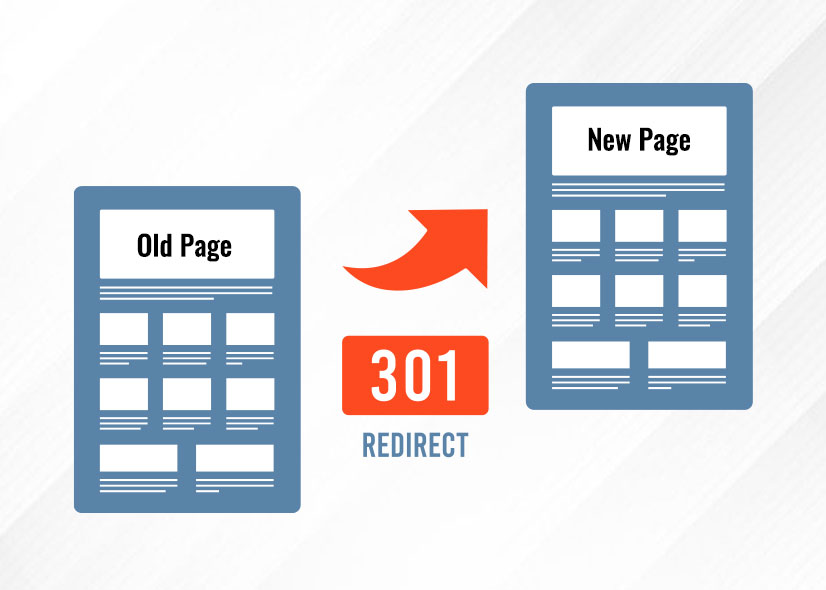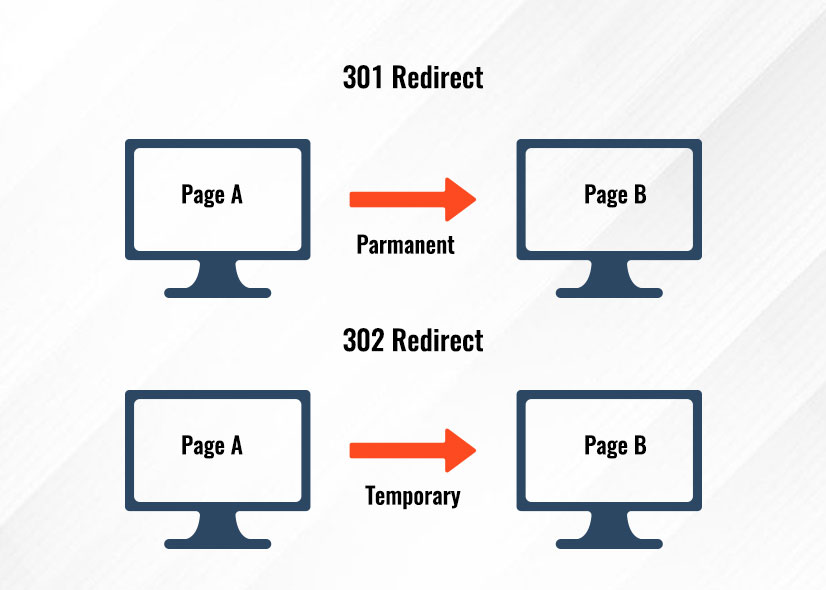A 301 redirect is a way to tell search engines and browsers that a web page has been moved permanently to a new address. It’s a technical instruction that comes in handy in certain situations. When you are changing your website domain from the old site to the new one, using a 301 redirect, you can ensure all the traffic from the old domain goes to the new one. Similarly, when you update your site’s URL structure, like from /products/item1 to /shop/item1, setting up a 301 redirect will make sure search engines and visitors can find the new URL without any issues. There are other cases as well, where using a 301 redirect can help you preserve your SEO efforts, such as in fixing broken links, merging pages and more. So, let’s discuss them in detail in this blog post and learn what it is and how to use it.
What is a 301 Redirect?
A 301 redirect is a permanent redirect that tells search engines and browsers that a page has been moved to a new location permanently. It’s a code that tells the search engine to transfer all traffic and SEO ranking signals (such as backlinks and page authority) to the new URL.
Without a 301 redirect in place, anyone clicking on a link to the old URL would land on a “404 Page Not Found” error. If you don’t set up the 301 redirect, you lose all the traffic and SEO value that the old page had built.
Situations where a redirect is used:
- When you change your domain name and move to a new hosting provider.
- When you are reorganizing your site’s URL structure.
- When you combine websites or pages.
- When you remove a page, but want to send users to a related page instead of showing a 404 error.
- When migrating from an HTTP site to an HTTPS site.
- When you are fixing typos in URLs.
301 vs 302 Redirect
301 redirect is often confused with 302 redirect. While both are HTTP status codes used for redirecting visitors from one URL to another, they serve different purposes. A 301 redirect indicates a permanent move, telling search engines and browsers that the page has been moved to a new location permanently. On the other hand, a 302 redirect is for temporary moves. It tells search engines that the redirect is temporary and the original URL should be used again in the future. To learn more about these redirects, read our blog post ‘301 vs 302 Redirect: Which Is Better for SEO?’
Impact of 301 Redirects on SEO
301 redirects play a key role in preserving your website’s SEO. Let’s understand how:
1. Preserving Link Equity and Page Authority
When you implement a 301 redirect, search engines transfer the SEO value of the old page to the new one. This helps preserve your backlinks, maintain page authority, and prevent the loss of traffic and search engine rankings.
2. Avoid Poor User Experience
You don’t want your users to land on “404 Page Not Found,” right? It hurts your user experience. And it’s not just about user experience, but also signals to search engines that your site is poorly maintained. That’s why it is important to use 301 redirects correctly.
3. Redirects can impact crawl budget.
Google prefers sites with a fast loading time. When there are complex and inefficient redirects on your pages, it can start creating performance bottlenecks and eventually affect your site’s speed. Finding and resolving such issues early and using 301 redirects correctly can prevent performance problems.
What are the best redirect practices for SEO?
Here are some redirect practices that are believed to be best for SEO performance:
- Always aim for the direct path from the old URL to the new one. For example, if your URL goes from A to B and then B to C, you should change it from A to C and eliminate the unnecessary step.
- Use redirects only when you absolutely need them. Too many redirects can confuse both users and search engines.
- Make sure your 301 redirects are functioning properly, not causing any SEO problems.
What is a 301 Redirect Error?
Issues related to 301 redirects usually occur when they are misconfigured. When this happens, it leads to issues like pages not loading correctly, redirecting endlessly, or SEO problems. Let’s see what causes them:
1. Redirect Loops: This happens when Page A redirects to Page B, and Page B redirects back to Page A. The browser gets stuck in an endless loop, and the user never reaches the destination page.
2. Redirect Chains: A chain is when a redirect points to another redirect, and so on. This can cause slower page load times and dilute SEO value.
3. Incorrect Redirect Targets: Sometimes, the destination URL in a 301 redirect is incorrect or no longer exists, leading to a 404 error after the redirect.
4. Conflicting Rules: Conflicts in your .htaccess file, server configuration, or CMS settings can cause redirects to behave unexpectedly, resulting in errors.
5. CMS or Plugin Bugs: In platforms like WordPress, using multiple plugins that manage redirects can result in overlapping or conflicting redirect rules.
Step-by-Step Guide to Fix Error 301 Moved Permanently
1. Identify the Cause
In order to fix the error, you first need to understand what’s causing it. As you know, 301 in itself is not an error but a status code that tells browsers and search engines that a web page has been permanently moved to a new URL. The problem arises when the redirect is set up incorrectly or when the old URL has not been redirected at all.
Here are a few cases that define how this may happen:
- You delete an old page or rename it, but do not create a redirect to a new page.
- The redirect points to the wrong destination, like a broken or nonexistent page.
- There is a redirect loop forming where page A is redirecting to page B, and B is redirecting back to A.
- There is a chain of redirects.
2. Check Your .htaccess File
If your website is hosted on an Apache server, the .htaccess file is one of the most common places to configure redirects. This hidden configuration file controls how your server handles requests for pages, including which URLs are redirected and where they go.
When a 301 redirect isn’t working as expected, there’s a good chance the issue lies in the .htaccess rules. So, you should:
- Locate the file. It’s usually in your website’s root directory. You can access it through your hosting control panel, FTP client, or SSH.
- Then, open it carefully because even small mistakes (like a missing space or slash) can cause redirect errors.
- Review your redirect syntax
- Make sure the target URL exists and points to the correct location.
3. Update Your Redirects
If you have recently moved content on your site, make sure to set up 301 redirects from the old URL to the new one. This will signal that the move is permanent.
4. Use Redirects Plugins
Plugins like “Redirection,” “Yoast SEO,” or “Rank Math” can automatically create redirects when you change a page’s URL or delete a post.
5. Verify Your Redirects
Once your redirects are set up, take time to confirm that they function as expected. You can use browser plugins or online redirect checkers to make sure old links correctly lead to their updated destinations.
6. Refresh Your Internal Links
Go through your website and replace any outdated URLs with the new ones. This helps users and search engines navigate smoothly and prevents broken links within your site.
7. Keep an Eye on Redirect Statuses
You can check for 404 errors in Google Search Console and fix them by setting up 301 redirects. This helps ensure visitors and search engines are directed to the correct pages, preserving your site’s SEO performance.
Wrapping Up
When it comes to your website’s SEO and user experience, little things like 301 redirects can make a big difference. By setting them up properly, you help maintain your site’s authority and keep everything running smoothly. But, like with any technical SEO stuff, it’s important to keep an eye out for redirect errors that could slow you down or cause problems. Regularly checking and optimizing your redirects will help avoid those issues.
If you are serious about levelling up your SEO knowledge, SEO Toronto Experts is where you want to be. We are always dropping the latest tips and best practices from on-page to technical SEO, so you can keep optimizing your site and climbing the ranks. Stay tuned for more tips to help you work smarter, not harder!






